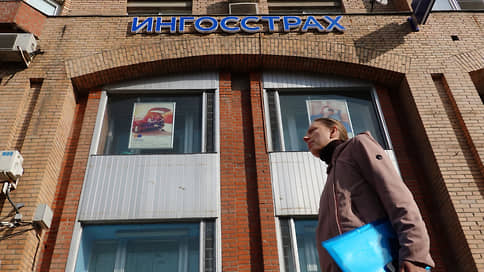“Ingosstrakh” ecosystematizes customers
[ad_1]

Despite the fact that many large participants in the financial market and technology companies have abandoned large-scale plans for the development of ecosystems, as it turns out, insurers have retained interest in this direction. Thus, Ingosstrakh is developing a system of access to a number of additional services. However, experts note that such projects are fraught with a number of serious risks, especially if the insurer is at the center of the ecosystem. More effective for this segment, they call, on the contrary, embedding in a partner ecosystem.
As the Kommersant survey showed, even in times of crisis, individual insurance companies are trying to develop their own ecosystems. In particular, Ingosstrakh, which is one of the five largest insurers in terms of fees for 2021 (data for 2022 is not yet available), is expanding the Capital Life system, giving access to finance and investment, medicine and travel, beauty and health services. Ingosstrakh believes that the ecosystem “increases interest in buying insurance products and customer loyalty.”
Tatyana Nikitina, Senior Director of NRA Financial Companies Ratings, adds that the provision of additional services, seamless loss settlement using partner services allow insurers, on the one hand, to increase the frequency of contacts with the client, on the other hand, to maintain a balance between costs and the cost of services. With the right approach, the integration of related businesses into the ecosystem will give a mutually beneficial exchange of customer bases and ultimately lead to an increase in income, says Innokenty Lukyanov, CEO of the insurance broker AST.
Ecosystem – these are several partner services owned by the company that jointly offer the client any solutions and accompany him at as many stages of his daily life as possible. The ecosystem consolidates services under a single brand, and also implies the existence of a subscription and a loyalty program.
However, experts emphasize that the launch of ecosystems requires significant costs. “In the minimum program, investments may not exceed 1-2 billion rubles, most of which will be directed to infrastructure. If we talk about creating systems of multidirectional business lines with synergy and cross-selling potential, then the amount of investment will be many times greater. The payback period, even in the absence of external shocks, can reach up to five years,” says independent expert Andrei Barkhota.
Insurance companies may not have such resources, admits Innokenty Lukyanov, noting that within ecosystems they “begin to compete with giants.” In his opinion, it may be more effective not to create your own system, but partnership: “The country already has Sberbank, the Tinkoff group, Yandex, VK, Ozon, and if the insurance company agrees with conditional Yandex on an exclusive offer for based on their ecosystem, such a business approach may well justify itself.”
Taking into account the fact that interaction with insurers usually occurs only a few times a year, it is difficult for them to become the center of the ecosystem, says Tatyana Nikitina. Oleg Khanin, General Director of the insurance broker Soyuz Insurance, believes that ecosystems with a mono-insurer are “doomed to fail in the next three to five years, because when buying an insurance product, customers want to choose among different companies.”
These doubts are shared by many major market participants. Igor Ivanov, deputy general director of RESO-Garantia, explained to Kommersant that the company “is not fond of fashionable terms, but is gradually saturating insurance services with additional services.” These can be both partner services and their own subsidiaries or affiliated companies, including clinics, their own psychological support service or leasing. Denis Makarov, board member of Rosgosstrakh, also notes that the insurer is developing related services, “but not within the ecosystem.” AlfaStrakhovanie assured that they are not supporters of building horizontal connections and believe that they should rather be a partner of different organizations and ecosystems, since this allows not to block the client within the same group of companies.
[ad_2]
Source link





